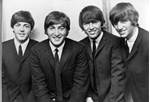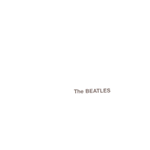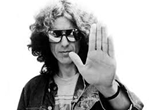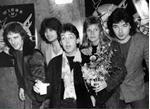- Register
- Log in to Tune-In
- Wishlist (0)
-
Shopping cart
(0)
You have no items in your shopping cart.
Beatles News

Surprisingly, one of the Beatles' most iconic songs is not often played by Paul McCartney on his Got Back Tour.
During McCartney's November 5, 2024, show in Costa Rica, he played “I Saw Her Standing There” in the second slot of the encore. Typically, this slot in the setlist has been held down by other Beatles songs like “Day Tripper” and “Birthday.” The Wings song “Hi, Hi, Hi” has also been played in that slot during the 2024 run of shows.
While “I Saw Her Standing There” is one of the Beatles' most popular songs, McCartney rarely plays it these days. The last time he played it was December 13, 2023, in Brazil. The song made four total appearances throughout the 2023 tour.
Previously, its only appearance during the Got Back Tour came in 2022 at the Glastonbury Festival. McCartney performed it with the Foo Fighters' lead singer, Dave Grohl.
It is unclear why the song is no longer a staple of his shows. Regardless, he gave the Costa Rica crowd a nice treat in the encore of his latest show.
“I Saw Her Standing There” is the opening track of the Beatles' debut album, Please Please Please, and is credited to Paul McCartn details

While the Beatles often collaborated with one another, there are several songs that didn’t require that all four members get into the studio. Find four such songs, below.
4 Beatles Songs That Don’t Feature Every Member
1. “Yesterday”
As fans of the Beatles could probably guess, “Yesterday” is essentially a solo Paul McCartney pursuit. This tender ballad sees Macca strum a simple melody on a guitar while his smooth vocals croon about the sting of regret. It is a precursor to McCartney’s solo career, which has more than proven that he can be a one man band if he chooses to be.
Yesterday
All my troubles seemed so far away
Now it looks as though they’re here to stay
Oh, I believe in yesterday
2. “Within You Without You”
George Harrison borrowed the talents of a group of Indian musicians for “Within You Without You.” Harrison called upon his Hare Krishna roots for this experimental track about perspective. Once again, this track made it very clear that the individual members of the Beatles could survive on their own if need be.
Try to realise it’s all within yourself
No on
details

The Beatles have all but completely stopped releasing new material. The remaining two members did reunite to drop one last single, “Now and Then,” in late 2023, but they swear that was the last time the band would produce anything completely original.
While they may not be writing and recording any songs or albums, The Beatles still manage to score chart debuts from time to time. Sometimes, the group sends one of their older projects to a ranking it’s never reached before. In other instances, archival material is released in some special manner, and fans of the rockers buy it in large enough numbers to make it a success.
The latter has happened again in the U.K. this week, as The Beatles are back on the charts. As several of their compilations find space on a few rankings, the group scores a new hit on a singles list with a collection that die-hard supporters of the Fab Four were clearly eager to hear—and buy.
“From Us To You 1 December 1963” debuts on one ranking in the United Kingdom this frame. The project, which is actually more of an EP than a single—at least in the way that most people today would think of a “single”—arrives on the Officia details

Stars including Will Smith, Oprah Winfrey and Stevie Wonder have paid tribute to Quincy Jones, who died this week aged 91.
Following a career as a producer, multi-instrumentalist, conductor as well as a film producer, in 1990 Jones produced the sitcom The Fresh Prince of Bel-Air, which gave Smith his first ever acting role. Jones brokered the casting in an impromptu audition by Smith – then known purely as a rapper – to NBC executive Brandon Tartikoff at a party at Jones’s home, with a contract drawn up that night.
“Quincy Jones is the true definition of a mentor, a father and a friend,” Smith wrote on Instagram. “He pointed me toward the greatest parts of myself. He defended me. He nurtured me. He encouraged me. He inspired me. He checked me when he needed to. He let me use his wings until mine were strong enough to fly.”
Source: Ben Beaumont-Thomas/theguardian.com

The Beatles’ self-titled ninth studio album, famously dubbed the “White Album,” is as iconic as it is enigmatic. With its simple, all-white cover and sprawling mix of genres, it broke away from the psychedelic vibes of Sgt. Pepper’s and delved into a fragmented, diverse collection of tracks. This double album, released in November 1968, has fascinated fans and critics alike for its eclectic nature and the intense interpersonal dynamics that simmered throughout its creation. Here are five lesser-known facts that reveal even more about this legendary album.
1. The White Album Was Almost Called “A Doll’s House”
During its production, the album bore the working title “A Doll’s House.” The Beatles envisioned a subtle nod to Henrik Ibsen’s famous play, but they scrapped the name when the British band Family released their debut album, Music in a Doll’s House. Ultimately, the understated, stark “White Album” cover — designed by pop artist Richard Hamilton — provided a blank canvas that allowed the music to speak for itself, free from visual associations.
2. Ringo Starr’s Departure Led to a Unique Welcome Back Gift details

The new previously unheard version of “Be Here Now,” which was recorded on 12 October 1972, as well as Paul Hicks’ 2024 mix of the original album rendition, are available now. A new video directed by Mathew Newton & Leah Marie Newton is also available for the latter, which features art from Ram Dass’ iconic book of the same name with the blessing of his foundation.
Overseen by Dhani and Olivia Harrison, Living in the Material World has been completely remixed from the original tapes for a suite of 50th anniversary releases, overseen by Paul Hicks (The Beatles, The Rolling Stones, John Lennon)
Speaking of the release, Olivia Harrison shares: “I hope you revisit Living in the Material World or discover it for the first time, and as you listen, share George’s wish for himself and mankind….. Give me Love Give me Peace on Earth.”
Dhani Harrison adds: "Finally, we are overjoyed to present to you the 50th-anniversary package of George Harrison's 'Living in the Material World'. For those of you who are just discovering this album; This record was released in service and with deep love for all our Brothers and Sisters around the world who populate this du details

Quincy Jones was never one to shy away from voicing his opinion, whether on presidential candidate Donald Trump or on his friend and collaborator Michael Jackson.
Arguably the most notorious example was when the late producer gave an interview with New York Magazine in 2018, and shared his first impression of “no-playing motherf***ers”... The Beatles.
“They were the worst musicians in the world,” he said. “Paul [MCCartney] was the worst bass player I ever heard.”
He reserved particular venom for drummer Ringo Starr, with whom he recalled recording the song “Love is a Many Splendoured Thing” for Starr’s 1970 debut solo album, Sentimental Journey.
“Ringo had taken three hours for a four-bar thing he was trying to fix on a song. He couldn’t get it,” Jones said.
“We said, ‘Mate, why don’t you get some lager and lime, some shepherd’s pie, and take an hour-and-a-half and relax a little bit.”
While Starr went away, Jones claimed that he snuck English jazz drummer Ronnie Verrell into the studio: “[He] came in for 15 minutes and tore it up. Ringo comes back and says [to Geor
details

For anyone even somewhat familiar with The Beatles, it is common knowledge that Paul McCartney and John Lennon had quite the beef following the breakup. That being so, there are a plethora of alleged reasons attributing to their animosity and estranged relationship. Some of the cited reasons include McCartney’s dominant behavior, Lennon’s relationship with Yoko Ono, and debates over the rights and royalties. All the alleged reasons consistently receive discussion and analysis and as a result, have contradicting truths. However, what is undeniably true are the artistic public critiques Lennon did of McCartney on his album, Imagine.
Source: American Songwriter
details

From Fats Domino and Jerry Lee Lewis to Billy Preston, Elton John and Billy Joel, piano men have made incredible contributions to the history of rock and roll. But as the genre's essential piano men go, one MVP, in particular, generally gets overlooked.
That's all about to change with The Session Man, a 90-minute documentary about the legendary-but-undersung pianist Nicky Hopkins that will premiere Nov. 5 on Amazon Prime. If you haven't heard of Hopkins, you're not alone. But you've definitely heard him.
Once one of the most in-demand session men in the business, Hopkins, who died in 1994 and age 50, played piano on such classics as "She's a Rainbow," "Sympathy of the Devil," "Gimme Shelter" and "Angie" by the Rolling Stones, "Matthew and Son" by Cat Stevens, "You Are So Beautiful" by Joe Cocker, "Photograph" by Ringo Starr and "Jealous Guy" by John Lennon.
Mick Jagger in 'The Session Man'.
In fact, the British pianist contributed to solo albums by all four former Beatles, including Lennon's Imagine, Starr's Ringo, George Harrison's Living in the Material World and Paul McCartney's Flowers in the Dirt.
Source: Jeremy Helligar/people.com

You can go on all day talking about the various reasons why the music of The Beatles is so special. Some of it can just be credited to fate. For example, there was just something magical about the vocal blend of John Lennon and Paul McCartney, something that occurred naturally when the two men sang together.
George Harrison often added his wonderful harmonies to the mix as well. For this list, however, we’re concentrating on those songs where Lennon and McCartney’s vocal mix provided something extra special that no other band could hope to replicate.
“I Saw Her Standing There” from Please Please Me (1963)
Considering it’s the very first song on the very first Beatles’ UK album (Please Please Me), “I Saw Her Standing There” occupies a special place in Fab Four history. And right off the bat, we get an indication of what Lennon and McCartney could do on the mic together. Paul mostly wrote the song, so he gets to sing lead while also propelling the thrilling pace with his fast-fingered bass work. But the song really hits another level in the chorus when Macca’s higher vocal is met by the low harmonies of Lennon, providing a kind of inverse approximation of details

By 1974, three of the former Beatles had reached No. 1 on the charts in the U.S. as solo artists. George Harrison led the pack with “My Sweet Lord” in January of ’71. Months later, Paul McCartney followed with “Uncle Albert/Admiral Halsey” from his album with his wife Linda, Ram. Ringo Starr also earned a No. 1 for “Photograph” in 1973. The following year would be John Lennon’s turn at the top.
In ’74, Lennon released his fifth album Walls and Bridges, featuring Elton John on background vocals and organ on “Surprise, Surprise (Sweet Bird of Paradox)” and piano and harmony on “Whatever Gets You Thru the Night.” The song was inspired by late-night TV channel surfing while living with mistress May Pang following his 18-month separation from Yoko Ono in 1973 known as the “Lost Weekend.”
It was also the track John suggested Lennon release as his first single because he believed it would go to No. 1. John even bet Lennon that if it did top the charts, he’d have to perform it live with him on stage.
Upon its release on September 23, 1974, “Whatever Gets You Thru the Night,” topped the Billboard Hot 100 ch details

Sir Paul McCartney continued to put on a spectacular show as he took to the stage in Colombia as part of the South American leg of his Got Back Tour.
The Beatles star, 82, looked smart in a navy blue jacket and trousers, which he wore over a pale blue shirt with large sleeve cuffs. He sported a 5'0 clock shadow and tucked his silver locks neatly behind his ears.
As he sang a string of songs from his impressive back catalogue, including Love Me Do, Hey Jude and Live and Let Die - which was accompanied with impressive fireworks and other pyrotechnics - the renowned hitmaker could be seen flitting between the guitar and piano, all whilst never missing a note or chord.
At one point he was seen waving a huge Colombian flag to the adoring crowd at El Campin Stadium in Bogotá.
Fulfilling his promise to return to Colombia at his last show back in 2012 – to the delight of fans – Paul wrote on. his official website: 'Colombia, we are on our way! Our last visit to you was so special and felt like an unbeatable experience but we know this is going to be even bigger and better!
Sir Paul McCartney continued to put on a spectacular show as he took to the stage in Colombia as part of t details

This is George Harrison’s Resonet Futurama, it was his most-played guitar in the early days of the Beatles seeing extensive stage and studio use from 1959 to 1961 including at the legendary Cavern Club in England.
It’s well-known that George Harrison, and countless other budding rock stars in Britain at the time, wanted to buy a Fender Stratocaster. The issue was that there was a UK government embargo on foreign musical instrument imports in place, and Stratocasters were almost impossible to find.
The reason the Stratocaster was so popular was partly due to the fact that it was one of the most advanced electric guitars in the world at the time, and also due to the fact that Buddy Holly used one. In the 1950s there were relatively few male teenage guitar players who didn’t want to be Buddy Holly.
Harrison bought the Resonet Futurama, a Czechoslovakian guitar, from Frank Hessy’s music store in Liverpool on November 20th, 1959. It looked a little like the Stratocaster and even though he found it more difficult to play, he did like the tone it produced. He bought it on a payment plan with his mother as the guarantor.
Source: Ben Branch/silodrome.com

Rock and Roll Hall of Famer Denny Laine would've been 80 years old this week. To honor the late Wings and Moody Blues musician, some of his former bandmates just released a tribute single for his Wings song "Time to Hide."
Recorded under the band name McDonalds Farm, the single dropped on Laine's birthday Tuesday, Oct. 29. The video posted the following day on YouTube.
Laine's widow, Elizabeth Hines of Naples, says she suggested the song to Laine's friends and former bandmates. It was one of his favorites.
"It was one of those songs you don’t forget," Hines says. "It was a very popular song, because of Denny's harmonica and his vocals. It's great."
The video features footage of Laine performing with Wings and the band McDonalds Farm. Laine's friend and former bandmate, Paul McCartney, approved the use of the Wings footage through his company MPL Communications, according to a news release.
"This single is all about Denny," says Steve McDonald of McDonalds Farm. "We all approached the recording with affection, admiration and love for a dear friend and fellow road traveler."
The song was recorded at Seagate Studio Dundee in Scotland and produced by Graeme Watt (who also details

It’s no small secret that tension was building amongst the Fab Four in their final years as a band, and one could argue that no Beatle was more familiar with these feelings than George Harrison, who repeatedly butted heads with Paul McCartney and John Lennon for creative input. While the latter musicians’ compositions comprised most of the Beatles’ records, Harrison normally only got one song, if any, per album side.
Given this growing animosity, many listeners have speculated whether Harrison’s contribution to Side No. 4 of the Beatles’ eponymous album from 1968 included a not-so-subtle dig at McCartney. If there was a jab to be found, Harrison did an excellent job sugar-coating it—literally.
Each side of the Beatles’ “White Album” features one song that George Harrison wrote. Side No. 1 features Harrison’s melancholy ballad, “While My Guitar Gently Weeps.” Side No. 2 features “Piggies,” Side No. 3 closes with Harrison’s “Long, Long, Long,” and finally, Side No. 4 features an apparent candy-themed dig at Eric Clapton, “Savoy Truffle.”
Harrison and Clapton developed a close relationship details
